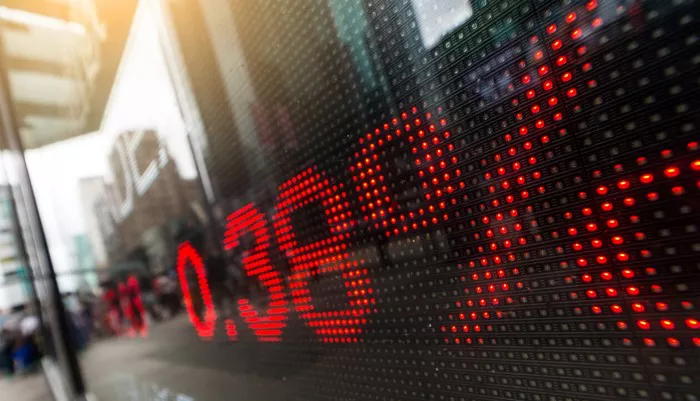The futures market plays a crucial role in the global agricultural sector, providing farmers, traders, and other market participants with a platform to hedge against price volatility and manage their risk exposure. While commodities like corn, wheat, and soybeans are commonly traded in the futures market, there is also significant activity surrounding rice futures. In this article, we will delve into the dynamics of the futures market for rice, examining its structure, functions, and significance in the agricultural industry.
Introduction to Rice Futures
Rice futures are financial contracts that obligate the buyer to purchase a specified quantity of rice at a predetermined price and date in the future, while the seller commits to delivering the rice at the agreed-upon terms. These futures contracts are traded on organized exchanges, providing market participants with a transparent and regulated platform for price discovery and risk management. The futures market for rice allows producers, processors, exporters, and other stakeholders in the rice supply chain to hedge against adverse price movements and lock in prices for future delivery.
Structure of the Rice Futures Market
The rice futures market operates similarly to other commodity futures markets, with contracts traded on organized exchanges such as the Chicago Mercantile Exchange (CME) and the Tokyo Commodity Exchange (TOCOM). These exchanges offer standardized rice futures contracts with specified grades, delivery locations, and expiration dates. Market participants can trade rice futures electronically or through open outcry trading pits, where buyers and sellers interact directly to negotiate prices. The futures market provides liquidity and price transparency, enabling efficient risk management and price discovery for rice market participants.
Functions of Rice Futures
Rice futures serve several essential functions for market participants across the rice supply chain. For producers, futures contracts allow them to lock in prices for their crops before harvest, reducing the uncertainty associated with fluctuating market prices. Processors and exporters can use rice futures to hedge against price risk and secure favorable pricing for their inventory and exports. Additionally, speculators and investors participate in the rice futures market to profit from price movements and provide liquidity to the market. Overall, rice futures play a vital role in facilitating risk transfer and price discovery in the rice market.
Factors Influencing Rice Futures Prices
Several factors influence rice futures prices, including supply and demand dynamics, weather conditions, government policies, and global economic trends. Changes in weather patterns, such as droughts, floods, or hurricanes, can impact rice production and supply, leading to fluctuations in futures prices. Government policies, such as subsidies, trade tariffs, and import/export regulations, also affect rice market dynamics and futures prices. Additionally, shifts in consumer preferences, population growth, and income levels influence rice consumption patterns and demand, impacting futures prices accordingly.
Participants in the Rice Futures Market
Various market participants engage in the rice futures market, including producers, processors, exporters, importers, traders, speculators, and investors. Producers use futures contracts to hedge against price risk and lock in prices for their crops, ensuring financial stability and predictability. Processors and exporters hedge their inventory and sales exposure using rice futures, mitigating the impact of price volatility on their profit margins. Traders, speculators, and investors participate in the rice futures market to capitalize on price movements and generate profits from trading activities.
See Also: How do crop futures work?
Global Rice Futures Exchanges
Several exchanges worldwide offer rice futures contracts, catering to regional and international rice markets. The Chicago Mercantile Exchange (CME) offers rice futures contracts traded in US dollars, providing exposure to the global rice market. The Tokyo Commodity Exchange (TOCOM) is a prominent exchange in Asia, offering rice futures contracts denominated in Japanese yen. Other exchanges in countries like Thailand, India, China, and Vietnam also provide rice futures contracts tailored to local market conditions and participants’ needs.
Hedging with Rice Futures
Hedging with rice futures involves taking a position in the futures market opposite to the physical position in the cash market, thereby offsetting price risk and protecting against adverse price movements. Producers can hedge their rice crops by selling futures contracts to lock in prices for future delivery, ensuring a predetermined revenue regardless of market fluctuations. Processors and exporters can hedge their inventory and sales exposure by buying futures contracts to establish a fixed purchase price or selling futures contracts to lock in selling prices.
Speculation and Investment in Rice Futures
Speculators and investors play a significant role in the rice futures market, providing liquidity and contributing to price discovery. Speculators take positions in rice futures contracts based on their expectations of future price movements, aiming to profit from buying low and selling high or selling short and buying back at a lower price. Investors may include institutional funds, hedge funds, commodity trading advisors (CTAs), and individual traders seeking portfolio diversification and exposure to the rice market.
Risks Associated with Rice Futures Trading
While rice futures trading offers opportunities for risk management and profit potential, it also involves certain risks that market participants should be aware of. Price volatility, liquidity constraints, margin requirements, and regulatory changes are some of the risks associated with rice futures trading. Market participants should conduct thorough research, develop sound risk management strategies, and adhere to disciplined trading practices to mitigate these risks effectively. Additionally, proper understanding of market fundamentals and technical analysis can help traders navigate the complexities of the rice futures market.
Conclusion
In conclusion, the futures market for rice plays a vital role in facilitating price discovery, risk management, and liquidity provision for participants across the rice supply chain. By offering standardized contracts for buying and selling rice at predetermined prices and dates in the future, rice futures enable producers, processors, exporters, traders, speculators, and investors to hedge against price volatility and manage their exposure to market risk. With proper understanding of market dynamics, risk management strategies, and regulatory compliance, market participants can effectively utilize rice futures to enhance their financial performance and achieve their business objectives in the dynamic global rice market.


